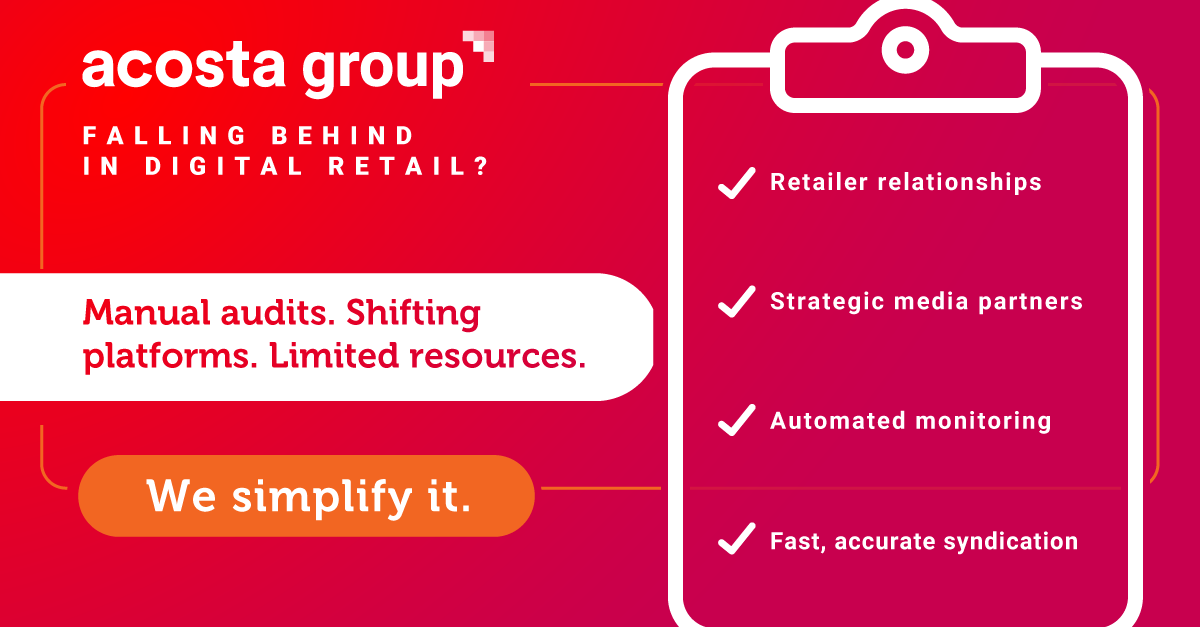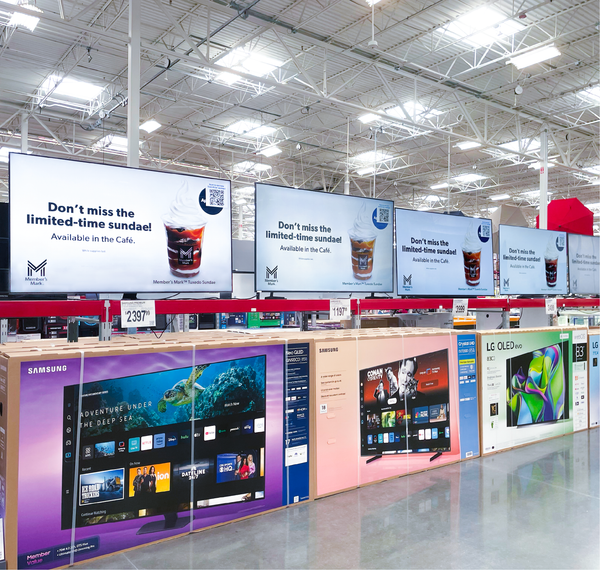What Big Agencies Believe About Retail Media
The survey of large US agency media buyers paints a picture of an industry caught between potential and execution.

A new study from ad platform Infillion landed on my desk last week, and it perfectly captures the slightly unhinged relationship that agencies have with retail media. The headline numbers look great: 80% call it an "exciting opportunity for differentiation" and 63% actively encourage clients to explore it. But dig deeper and you'll find a more complicated story about an industry still struggling with its own identity crisis.
Infillion's survey, conducted with 58 US-based senior agency professionals, mostly employed by large agencies and holdco's, reveals that while agencies are bullish on the category's potential, they're frustrated by execution realities that hold back true strategic investment.
Agencies ❤️ Retail Media, But There's a Problem
Despite recognizing retail media's strategic value, agencies are stuck treating it like a promotional channel. Only 7% view retail media as an upper-funnel tactic—the lowest of any medium. Compare that to 71% who see CTV and 76% who see linear TV as brand-building tools.
Yet 40% of these same agencies expect retail media to perform across the full funnel. They want it to build brands, not just drive conversions. But when push comes to shove, retail media gets the performance marketing treatment: tactical, short-term, and measured primarily on immediate sales lift.
This isn't entirely the agencies' fault. Retail media networks have spent years positioning themselves around conversion metrics and bottom-funnel objectives. The infrastructure—limited creative options, inconsistent KPIs, and measurement focused on immediate ROAS—reinforces promotional activation even when strategic intent exists.
"Buyers want full-funnel value from retail media, but still associate it with bottom-funnel performance. The disconnect stems from how RMNs have historically been positioned: short-term, salesfocused, and measured in immediate returns. That positioning, paired with limited creative capabilities and inconsistent KPIs, has made it difficult for RMNs to credibly claim upper- or mid-funnel value."
The ROAS Trap: Why Agencies Can't Escape Tactical Thinking
There's a deeper reason why retail media remains stuck in promotional mode, and it extends far beyond the platforms themselves. As Andrew Lipsman wrote this week in his Media, Ads + Commerce newsletter, "ROAS is the single greatest force that determines ad spending today." This creates a vicious cycle where even strategic retail media investments get evaluated on short-term metrics.
The problem is structural. Demonstrating positive return-on-ad-spend has become how media sellers, agencies, and brands capture more dollars. But as Lipsman points out, "true marketing effectiveness typically plays out over months and years, not days and weeks." Retail media networks, desperate to prove their worth to budget holders, have leaned heavily into immediate attribution and conversion tracking—exactly the kind of short-term thinking that reinforces tactical activation.
When agencies know they'll be judged on next quarter's ROAS numbers, even the most strategically minded teams default to promotional tactics. It's rational behavior in an irrational system.
Acosta Group’s retailer intimacy is legendary—merchants answer their calls. You're not going to find that access at the same scale with any other partner out there. That expertise with both retailers and shoppers fuels its Connected Commerce team, which offers digital shelf, retail media, and data analytics all under one roof. Tap into 100 years of retailer relationships and award-winning digital commerce capabilities.
CTV: The Format They're All Betting On
If there's one bright spot in this research, it's connected TV. CTV already represents nearly a quarter (23%) of RMN investment, according to Infillion’s survey. More importantly, its share is expected to rise to 24.6%—making it the largest allocation among strategically aligned buyers.
Agencies praise CTV's combination of scale, storytelling capabilities, and household-level targeting—qualities few other retail media formats can match.
This mirrors what I've been hearing from the market. CTV is increasingly seen as a performance driver, not just an awareness tool, thanks to advances in measurement, shoppability, and programmatic access. It's the closest thing retail media has to a true full-funnel solution.
Contrast this to digital in-store formats, which – despite all the retailer hype—receive only 2% of spend, the lowest of all formats. This suggests agencies remain skeptical about these formats, or perhaps that brands are buying these placements directly with the retailer. This is something I plan to dig into further in upcoming pieces.
*I will point out some issues that I see in the categorization of these spend buckets. Some categories overlap — for example, shoppable formats can appear across CTV, social, or display — while others (like on-site search vs. on-site display) reflect reporting conventions rather than mutually exclusive budget lines. This means the figures provide directional insight into spending priorities, but not a fully MECE (mutually exclusive, collectively exhaustive) framework.
What stops them from investing more
The biggest barriers haven't changed much from what I've been writing about for months. Forty percent of buyers cite inconsistent measurement as the top challenge, while 33% are frustrated by the lack of third-party validation or benchmarks.
Here's what strikes me: retailers keep rolling out flashy new features—in-store media formats, audience activation tools, shoppable video—when upgrading basic self-serve measurement capabilities might win them more points with existing media buyers. The agencies are telling us exactly what they need, yet retailers seem more focused on expanding their inventory than fixing the fundamentals that drive actual spend allocation.
Cost and inflexibility concerns are also highlighted among heavy retail media buyers. The backdrop here is rising CPCs for onsite media among the big players in the space, Amazon and Walmart; and high minimums for advertisers who want to activate against a retailers' audience using platforms like The Trade Desk. ADWEEK reported last week spend minimums from major U.S. retailers in the $50K - 100K range, with a 30-50% fee of media costs for custom audiences when activating through TTD.
But the challenges can't all be landed exclusively at the retailers' feet. Agencies and the brands they represent have structural issues that prevent the most effective uptake of the medium.
One of the top barriers to RMN investment among agency buyers is “siloed budget ownership, specifically the divide between brand, performance, and shopper marketing teams”.
These divides make it difficult to connect targeted shopper data to broader digital plans and to integrate retail media into existing tech stacks.
In other words:
- Brands: Fragmentation between teams (brand marketing vs. performance vs. shopper/trade) leads to competing KPIs and fractured budgets.
- Agencies: Sit in the middle of this complexity — they have to navigate the politics and translate brand-side silos into workable retail media plans.
- Retailers: Contribute to friction too, with organizational divides between the merchant organization (driving lucrative trade spend) and the retail media business (sometimes diverting that trade spend, intentionally or not)
This organizational friction means that even when retail media platforms improve their capabilities, internal agency and brand politics might limit investment.
Wrapping up
The survey, despite having a small sample size, paints a picture of an industry caught between potential and execution. Agencies see the opportunity—they want retail media to work as a strategic channel. But until retail media networks address the fundamental infrastructure challenges around measurement, transparency, and cross-funnel capabilities, they'll remain stuck in the tactical tier.
The winners will be the platforms that can bridge this gap, particularly through formats like CTV that naturally support full-funnel objectives. The losers will be those that continue operating as if enthusiasm alone is enough to drive strategic investment.
About the Study: "Getting Real About Retail Media" was conducted by Infillion, an advertising platform with an omnichannel DSP, MediaMath, between May-June 2025. While the sample of 58 senior U.S.-based agency professionals is small, these respondents control large budgets under major holding companies, making their perspectives highly influential. Link to download the study.

PS - if you enjoyed this article, check out 'Retail Media Tech Jam' this Friday with me and The Middlemen Podcast 's Tom Limongello and Scott Messer -- a must-attend virtual session on retail media network tech stacks. You'll get fresh research on how ad-tech knowledge influences spending decisions, hear real-world tech stories, and what the retail media "doom loop" is. Walk away with a practical checklist to evaluate RMN tech capabilities. This special collaboration won't be repeated—grab your spot now.






